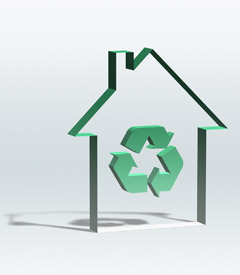By Tom Butala
In 2010, the term ‘building green’ has been right up there with ‘foreclosure’ in conversations throughout the real estate industry. According to a recent study, the green trend will become increasingly prominent in years-to-come.
In McGraw-Hill Construction’s ‘Green Outlook 2011: Green Trends Driving Growth,’ the company says the current value of green building construction is valued at $71 billion and accounts for 25 percent of all construction in 2010. Green building back in 2008 was valued at $42 billion, and is projected to be worth $135 billion by 2015.
“It’s an amazing area of opportunity at a time when the construction market is extremely challenged,” Harvey M. Bernstein, vice president, Global Thought Leadership and Business Development, McGraw-Hill Construction. “In today’s economy, firms that specialize in green or serve this market are seeing a tremendous advantage— and they’re doing good at the same time. Green building leads to healthier places for us to live and work in, lower energy and water use, and better profitability.”
Often limited to only the higher tier of residential projects, green building accounts for a significant portion of the market in various non-residential sectors.
The health care industry is estimated to expand its green share to as much of 40 percent of its construction in 2010. The educational and office building markets also report a large increase in green building. This year, the U.S. Green Building Council’s LEED specification is mentioned in 71 percent of all projects valued at over $50 million.
The report also provides insight from building owners in the realm of green construction.
Owners report a 13.6 percent decrease on average in operating costs of new buildings, and an 8.5 percent decrease for retrofits. An increase in building values of 10.9 percent was reported in new buildings, and a 6.8 percent increase for retrofits.
Here in Chicago last week, the U.S. Green Building Council hosted its ‘2010 Greenbuild International Conference and Expo’ at McCormick Place West. The annual conference is a cornerstone in the green building industry.
“As one of the first cities to adopt LEED for public buildings and the city that is home to more LEED-certified buildings than any other, Chicago is truly committed to leadership as a “next-generation” city – the perfect place for us to celebrate being part of Generation Green,” according to www.greenbuildexpo.org. “Together, we will define what the future looks like in cities and towns around the world.”